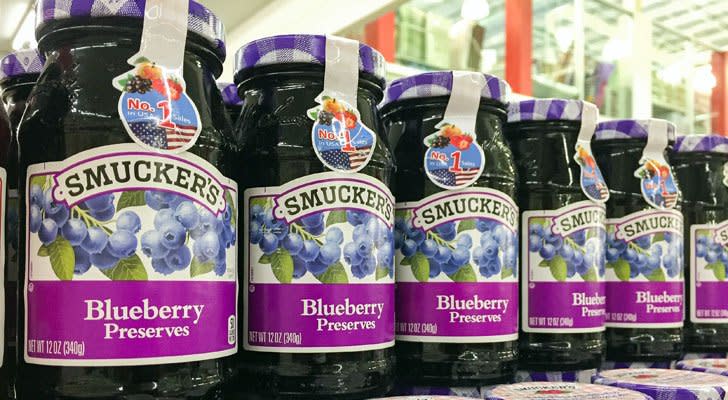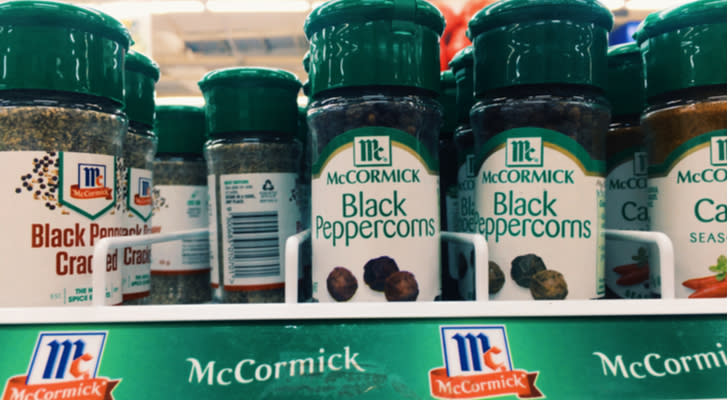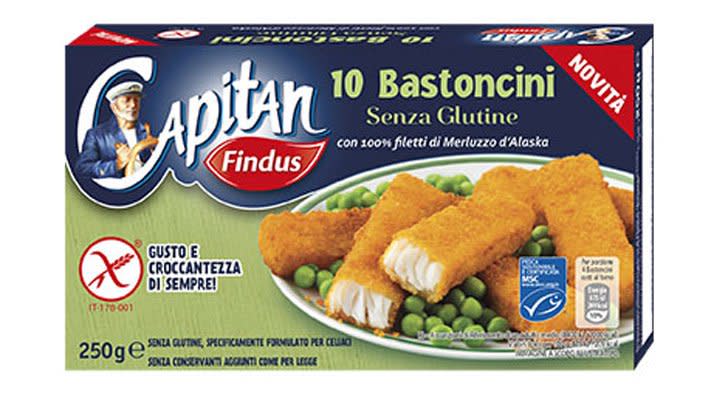7 Food Stocks to Buy Now
It seems appropriate that a food-related IPO backed by Bill Gates would open with a tech-like bang, but that’s what’s happened to Beyond Meat (NASDAQ:BYND), the California producer of plant-based foods. It went public May 5, gaining 163% in its first day of trading. Up 217%, it has gotten investors excited about food stocks to buy.
While Beyond Meat has a star-studded investor list, I don’t think it’s one of the food stocks you should sink your teeth into for two reasons: First, it doesn’t make any money. Secondly, its valuation is entering bizarre territory at 42 times revenue.
Besides, you can often buy IPO shares for less than the offering price within 12-24 months of going public. Let’s leave Beyond Meat for down the road.
InvestorPlace - Stock Market News, Stock Advice & Trading Tips
In the meantime, I’m going to recommend seven food stocks to buy that make money, preferably loads of it, while also growing the top line by double digits.
At the end of the day, if some of these don’t pan out, at least you can console yourself by eating some of their food.
J.M. Smucker (SJM)

Source: Shutterstock
J.M. Smucker (NYSE:SJM) delivered its first-ever company spotlight May 1. It was intended to update investors about the fiscal year ahead; it focused on the transformation that’s taken place at the maker of jams and jellies over the past 24 months to make it more attractive to consumers.
CEO Mark Smucker is the fifth generation of the Smucker family to run the $14 billion food company, which has three operating segments: Coffee, Consumer Foods and Pet Foods.
Folgers and several other brands drive sales in the coffee division. Smucker’s jams and Jif peanut butter are two of the leading brands in its consumer foods division and Milk Bone, Meow Mix and Kibbles ‘n Bits are just a few of its brands in the pet food division.
Smucker’s was once almost exclusively known for its jams and jellies. In the first nine months of 2019, ended Jan. 31, the company’s consumer foods business accounted for 27% of its overall revenue of $5.9 billion.
Pet Foods is the company’s biggest operating segment. It accounts for 36% of the company’s sales followed by coffee at 23% and international sales at 14%.
However, even though the company’s coffee business ranks second in terms of sales, it’s easily the top segment in terms of profits. In the third quarter, the coffee segment’s profit margin was 32.7%, almost ten percentage points higher than its other two divisions.
The company’s focus on innovation, investments in its various businesses, cost savings and acquisitions, is the way to top- and bottom-line growth.
Combining its core brands of Smucker’s, Jif, Milkbone and Folgers, along with on-trend, high-growth brands such as Sahale Snacks and Cafe Bustelo, Smucker’s looks to grow revenues by 2%-3% annually with operating income growth of at least 5%.
Slow and steady wins this race.
McCormick (MKC)

Source: Shutterstock
Last October, as the markets started to get a little skittish, I recommended McCormick (NYSE:MKC) stock for its defensive qualities. Generally, food-related businesses do well in market downturns because we all have to eat.
It has been 22 months since McCormick has acquired French’s condiments business for $4.2 billion. Easily the spice maker’s biggest deal in its history. The acquisition included Frank’s RedHot sauce, a product that I religiously use for almost all of my meals. I love a little heat in my food.
McCormick reported Q1 2019 earnings in March. The results were more than satisfactory with top-line sales growing 4% year-over-year, excluding currency to $744.9 million and an operating profit of $135.3 million, an operating margin of 18.2%
The company’s business did very well in the Americas during the first quarter with sales increases of 3% of 7% for its consumer sales and flavor solutions segments respectively. A sure sign the U.S. economy is still robust.
At the time, I called McCormick the best or second-best consumer staples stock, of a solid bunch. Since then it has gained 15%.
Between Club House, French’s, Frank’s RedHot and Billy Bee, McCormick has a group of brands that have stood the test of time. You won’t get rich off its 1.5% dividend yield, but over the long haul, MKC will deliver acceptable results.
Bridgford Foods (BRID)

Source: Shutterstock
My wife and I stopped eating meat about four years ago. One of the only things I miss in the entire spectrum of dinner meats is the pepperoni stick. I could eat a whole pack of spicy pepperettes in a matter of moments. I just loved them. It almost didn’t matter the brand.
As I was putting together my list of food stocks, I came across Bridgford Foods (NASDAQ:BRID), a micro-cap maker of salami and pepperoni products based in Anaheim, California.
Living in Canada, I don’t get as much exposure to some of the U.S. food brands found on grocery store shelves, but unless I’m mistaken, I have seen Bridgford’s products north of the 49th parallel.
Like McCormick, it’s not going to grow sales by double digits each year, but the demand for pepperoni continues to grow to ensure that it increases top-line sales by 5-7% annually.
In the first quarter ended Jan. 25, 2019, the company’s snack foods division, which incorporates the pepperoni and salami business, saw sales increase by 8.4% YOY thanks to a 9% increase in volume offset by a 0.9% decrease in the selling price per pound.
The downside (or upside depending on how you look at it) is that Walmart (NYSE:WMT) and Dollar General (NYSE:DG) account for 45% of its overall sales. Any reduction in orders from these two would result in significantly lower revenue in the near term, although that doesn’t appear imminent.
What’s most interesting about Bridgford Foods is its real estate assets.
For example, it sold a parcel of Chicago land in 2018 for $6 million. It owns a total of eight properties in Anaheim, Dallas, North Carolina and Chicago that cover 31 acres. The properties are carried on its books for $32.6 million.
How much do you want to bet the real estate is worth a lot more?
Food Stocks to Buy: J&J Snack Foods (JJSF)

Source: Steve Snodgrass via Flickr (Modified)
One of my favorite U.S. stocks is Church & Dwight (NYSE:CHD), the maker of consumer brands such as Arm & Hammer baking soda, Oxi-Clean stain remover, Trojan condoms … the list goes on.
It hasn’t had a negative annual return in the past decade, delivering an annualized total return of 19.3% for its shareholders. J&J Snack Foods (NASDAQ:JJSF), a New Jersey-based snack food company that’s probably best known for Icee and Slush Puppie products. It has only had one down year in the past decade — a 3.6% loss in 2018 — delivering an annualized total return of 16% to its shareholders.
CEO Gerald Shreiber bought the company out of bankruptcy in 1971 for $72,100. At the time, it had annual sales of $400,000 and just eight employees. Today, JJSF has more than $1.1 billion in sales, $103.6 million in profits, more than 4,500 employees and zero debt.
As long as Schreiber continues to own 20% of the company and is the company’s CEO, JJSF stock is more like a GIC than a small- or mid-cap stock.
Do your due diligence. I’m sure you’ll like what you find.
Nomad Foods (NOMD)

Forget for a moment what kind of food products Nomad Foods (NYSE:NOMD) sells and consider the people behind its business.
Although some of Nomad’s brands have been around since the early 20th century, it was the creation of Nomad Holdings in 2014 by well-known financiers Noam Gottesman and Martin Franklin, and its subsequent listing on the NYSE in 2016, that got the ball rolling.
Nomad announced its Q1 2019 investment results on May 9. They were excellent.
On the top line, Nomad grew organic revenue by 0.9% and reported sales 15% to €618 million and adjusted earnings-per-share by 14% to €0.40.
“First quarter results reinforce the sustainability of the Nomad Foods business model, now in its third consecutive year of organic revenue growth and market share gains,” said Nomad Co-Chairman Noam Gottesman. “The combination of solid operating momentum and a well-capitalized balance sheet puts us in a position of strength as we pursue our organic and acquisitive growth ambitions.”
Are you still interested in what Nomad sells?
It markets frozen foods under the Birds Eye, Findus, Iglo, Aunt Bessie’s and Goodfella’s brands. Its three biggest categories are frozen seafood, which accounts for 38% of its revenue, followed by frozen vegetables at 18% and ready-to-eat products at 10%.
Something like 90% of its core portfolio of products is ranked No. 1 or No. 2 in market share in Western Europe. Overall, it is the leader for frozen food in Western Europe with a 14% market share, ahead of Dr. Oetker and other larger companies.
Conagra Brands (CAG)

Source: Shutterstock
Conagra Brands (NYSE:CAG) is the fourth-largest U.S. food company with $11.1 billion in 2018 sales. Like all large food businesses, growth comes through a combination of organic sales and large acquisitions like the $10.9 billion deal to buy Pinnacle Foods it closed in October 2018.
Pinnacle’s sales account for approximately 28% of Conagra’s overall revenue. The company had some great brands like Vlasic pickles and Udi’s gluten-free, but it was a mess financially and organizationally. One of the company’s five main goals is to return Pinnacle’s big brands to growth mode.
At Conagra’s April 10 Investor Day, it said that it would complete the Pinnacle integration well ahead of schedule.
Over the next three years, Conagra expects organic net sales growth of 1% to 2% annually with operating margins of at least 18% and adjusted EPS of at least $2.70 by 2022.
In November 2016, Conagra spun-off Lamb Weston Holdings (NYSE:LW) into its own publicly traded company. Since that spinoff, Conagra shareholders who kept their shares have seen a total shareholder return of 155%.
Over the next three years, I expect the work it has done to integrate Pinnacle will be a success leading to a much higher Conagra market cap.
Premium Brands (PRBZF)

Source: Shutterstock
This is a Canadian company that many American investors won’t know. Listed on the Toronto Stock Exchange and available over the counter in the U.S., Vancouver-based Premium Brands Holdings (OTCMKTS:PRBZF) is a food company that has grown tremendously through acquisitions.
How many, you ask?
Well, between 2005 and 2018, Premium Brands made 52 acquisitions, totaling almost C$1 billion, many of the acquired companies are located in the U.S. where it generates a significant portion of its C$3.0 billion in annual revenue.
In fiscal 2019, Premium Brands expects to generate at least C$3.66 billion in sales with adjusted EBITDA of C$320 million.
Over the past ten years, we have firmly established almost all of our business platforms as leaders in their respective market segments in Canada,” CEO George Paleologou stated in its Q4 2018 press release. “With the steps taken in 2018, we are now set to replicate this success in the U.S., which I should mention we have already achieved to a certain degree with our sandwich and deli meats platforms.”
Paleologou’s acquisition strategy is much like Warren Buffett’s. He’s interested in making acquisitions with people he likes, respects, and can trust to continue growing the business.
As a result, Premium Brands, much like Berkshire Hathaway (NYSE:BRK.A, NYSE:BRK.B), now get interested sellers coming to them making the acquisition process far quicker.
Down 31% over the past 52 weeks through May 8, Premium Brands’ stock is a lot more appealing for value investors. It’s under the radar, but it’s worth it.
At the time of this writing, Will Ashworth did not hold a position in any of the aforementioned securities.
More From InvestorPlace
The post 7 Food Stocks to Buy Now appeared first on InvestorPlace.
